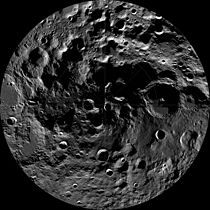NUCLEAR ISSUES -
Commentary.
Perhaps the worldwide campaign against CO2 has been secretly encouraged and manipulated by the nuclear energy lobby.
Of course they were building nuclear plants before there was any talk of global warming.
But perhaps the industry sensed that at some point the public would become aware of the deceit that had been perpetrated on them and demand an end to this dangerous source of electricity.
Conveniently, it is about this time when hysteria about global warming begins to pick up. What best to counteract dirty fossil fuels than more nuclear power?
Were scientists and the public dupes in a major manipulative process?
Of course they were building nuclear plants before there was any talk of global warming.
But perhaps the industry sensed that at some point the public would become aware of the deceit that had been perpetrated on them and demand an end to this dangerous source of electricity.
Conveniently, it is about this time when hysteria about global warming begins to pick up. What best to counteract dirty fossil fuels than more nuclear power?
Were scientists and the public dupes in a major manipulative process?
How else would anyone explain the ease with which well-educated and environmentally aware people could be persuaded into allowing - and even supporting - nuclear power plants, in spite of all their negative aspects from operational to waste disposal?
If you follow ENENEWS and other anti-nuclear websites you will see that nuclear plants are anything but 'safe clean energy'.
On the contrary, they are monstrous nightmares with frequent accidents that are rarely covered by the media, and absolutely no safe way of disposing of their waste.
The most they can aspire to is to hide the waste from view inside some cave or mountain. Out of sight is out of mind. Let future generations deal with it.
On the contrary, they are monstrous nightmares with frequent accidents that are rarely covered by the media, and absolutely no safe way of disposing of their waste.
The most they can aspire to is to hide the waste from view inside some cave or mountain. Out of sight is out of mind. Let future generations deal with it.
But in the meantime we have disasters waiting to happen, not only from human mistakes, but from earthquakes, considering that so many plants are built on or close to geologic fault lines.
We must also live with the fear of massive terrorism-caused or solar-originated electromagnetic pulses - EMPs- which could incapacitate safety features in nuclear plants and unleash Armageddon on the country.
*****************************************************************************
*****************************************************************************






